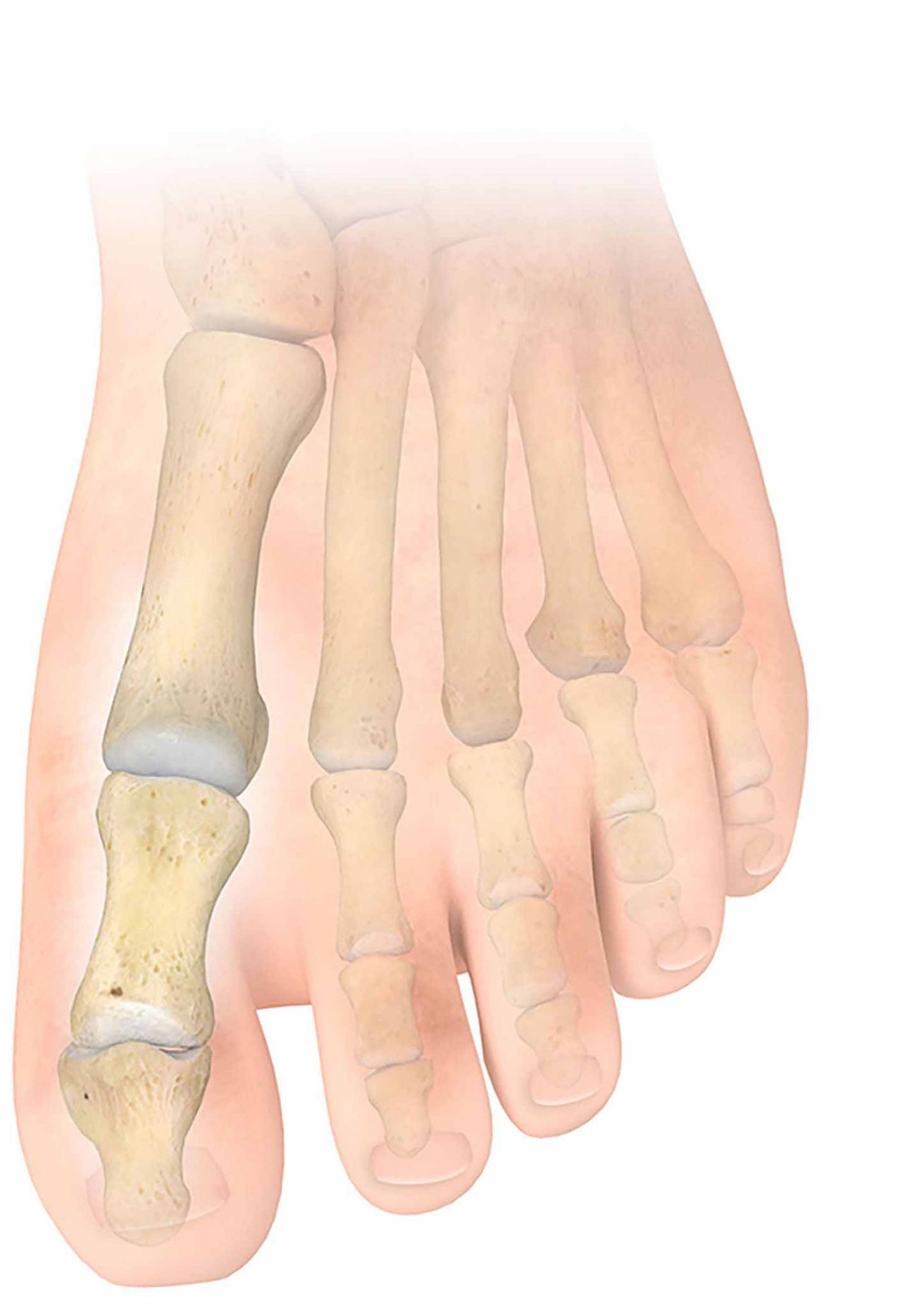The clinical name for a bunion is a hallux valgus, which is a bony bump that forms on the joint at the base of your big toe. Over time, pressure on the joint can force the top of the big toe to lean in toward the smaller toes. As the bones in the front of your foot move out of place, the joint begins to stick out. These changes in the foot’s bone structure cause the bump.
 Healthy
Healthy
 Bunion
Bunion
Anyone can get bunions. They can sometimes run in families, but they can also be a result of the shape of your foot or the way you walk.1 Arthritis can cause them, too.2 They develop more often in women than in men and tend to happen more frequently as you age.1
The skin over a bunion might become red and sore. As the bunion gets bigger, you may also find it painful to wear shoes or even walk.1,2
Other symptoms of bunions may include:2
- A bulging bump on the outside of the base of your big toe
- Swelling, redness or soreness around your big toe joint
- Corns or calluses (these often develop where the first and second toes rub against each other)
- Ongoing pain or pain that comes and goes
- Limited movement of your big toe
To help prevent bunions, choose your shoes with care. Shoes should have a wide toe box and not be too pointy in the toe. Your shoes should fit the shape of your foot without squeezing it.2
Bunions are permanent unless surgically corrected,1 but they don’t always require treatment. If you have a bunion that is painful or causes you difficulty when walking, you may want to talk to your doctor or a podiatrist (a doctor who specializes in foot problems).
References
- 7 Ways to Ease Your Bunions without Surgery (2019, Oct 11). Cleveland Clinic. https://health.clevelandclinic.org/7-ways-to-ease-your-bunions-without-surgery/
- Bunions (2019, Oct 22). Mayo Clinic. https://www.mayoclinic.org/diseases-conditions/bunions/symptoms-causes/syc-20354799



